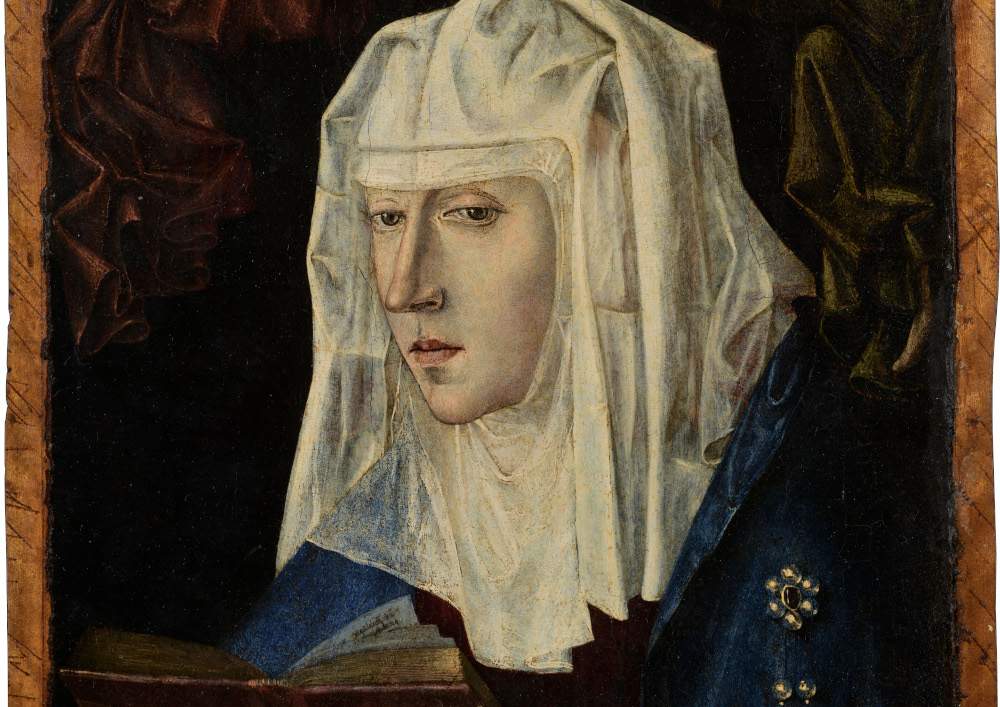From Nov. 17, 2022 to Feb. 27, 2023, the Poldi Pezzoli Museum in Milan presents the exhibition L’arte del dono. From Gian Giacomo Poldi Pezzoli to Today, on the occasion of the bicentenary of the birth of the house museum’s founder.
On display are thirty-eight works, including paintings, sculptures, clocks, cabinets and fans, covering a chronological span from the 14th to the 20th century. The museum presents to the public not only the works donated by the generosity of collectors (in fact, sixty-one new works have arrived at the Poldi Pezzoli since 2018), but also the figures of the donors and the reasons that led the Museum’s management and the Foundation’s Board of Directors to accept them.
The exhibition opens with an animated image of Gian Giacomo Poldi Pezzoli reproduced on a LEDwall that introduces the exhibition’s themes, flanked by a QR code that allows visitors to access the list of all the Museum’s donors since 1881, the year of its opening. The first work one encounters is the 14th-century triptych attributed to Niccolò di Ser Sozzo, which will enrich the Poldi Pezzoli’s collection of gold backgrounds. The central area of the Fresco Salon brings together works of different types from the 15th and 16th centuries: a triptych by the Master dated 1416; a wooden relief depicting the Imago pietatis by Pietro Bussolo of Lombardy; the Reading Virgin, an extraordinary work attributed to the early activity of Antonello da Messina; and three cabinets covered with embossed and damascened steel plaques of Milanese workmanship, which, with those already in the Museum, constitute one of the most important collections of furnishings of this type. Closing this room is the Lute Player, attributed thanks to the occasion of the exhibition to Hezekiah of Vezzano known as Zacchia the Elder. The entrance to the second room is dominated by the Portrait of a Gentleman of the seventeenth-century Flemish school, which occupies the visitors’ optic cone. It is preceded on the left by two landscapes from the ambit of Alessandro Magnasco, a Genoese painter of whom the Poldi Pezzoli owns several works. This is followed by an early 18th-century painting by Paolo Pagani depicting the Holy Family with St. John the Baptist that contributes to enriching the collection of Lombard painting, in which late Baroque works are scarce. The exhibition closes with a selection of parchment, lace and silk fans of European manufacture from the 18th and 19th centuries and a selection of pocket watches, in which the ingenuity and originality of the mechanisms as well as the curiosities of the dials and cases are highlighted.
Famous names in the Milan of the second half of the 20th century appear in the donations: the Nella Longari Society, an important antiquarian whose sons Mario and Ruggero and grandson Marco have brilliantly picked up the baton; Carla Melissa Gabardi, linked among other things to the Museum for having curated the exhibition The Italian Jewel of the Twentieth Century in 2016; Countess Innocente Ambrosini Contini Bonacossi, wife of the descendant of theillustrious Florentine antiquarian of the first half of the 20th century and generous donor of two works; watch collector Angelo Reina, an astonishing and acute connoisseur of the subject; collector as well as philanthropist, intellectual and painter Geo Poletti; and Countess Marta Marzotto, collector of the fans donated to the Museum by her daughter Diamante. Special episodes related to the donors are recalled in the exhibition to recompose the climate of generosity that has always distinguished Milan and its citizens.
Accompanying the exhibition is a video made in collaboration with ICASTICA - Art and Cultures of Communication, the multimedia division of Gruppo Promos, in which interviews are collected with a number of donors who, in various ways, have related to the Museum’s reality. Also approaching were important artists such as Chiara Dynys, who created an exhibition in the museum spaces offering site-specific works inspired by Piero della Francesca’s masterpiece. The video also illustrates the donation and acquisition process. Upon entering the museum, the works undergo a semantic and functional “transformation,” becoming Musealia, or museum objects, completely decontextualized from their original function or that of collectibles owned by a single person or family and handed down. In fact, each donation is also an encounter between people who deliver a story, sometimes of family, sometimes of collecting passages, and sometimes of pure falling in love. The exhibition and graphic design, entrusted to Lissoni & Partners, presents the works isolated individually or collected in small groups by type, within niches that evoke a domestic dimension thanks to a covering that evokes the taste of Gian Giacomo Poldi Pezzoli’s house. Numerous collateral activities will be organized throughout the duration of the exhibition. The exhibition is supported by the Region of Lombardy, ENEL and a generous donor who has decided to support him in this project while remaining anonymous.
Image: Attributed to Antonello da Messina, Virgin reading, detail (c. 1460; tempera and oil on panel. Donation Luciana Forti in memory of her father Mino, 2018)
 |
| Poldi Pezzoli celebrates its donors with an exhibition, marking the bicentennial of the founder |
Warning: the translation into English of the original Italian article was created using automatic tools. We undertake to review all articles, but we do not guarantee the total absence of inaccuracies in the translation due to the program. You can find the original by clicking on the ITA button. If you find any mistake,please contact us.